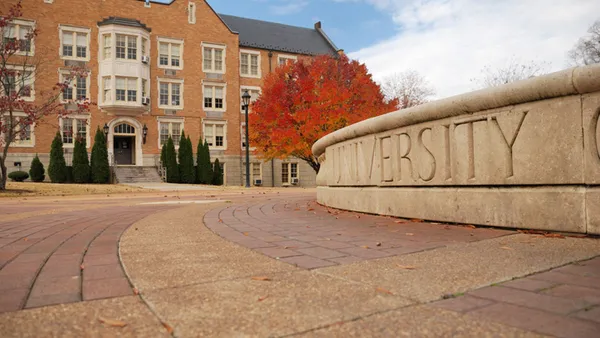Dive Brief:
- State and local funding for public higher education rose 3.7% in the 2023 fiscal year after accounting for inflation, marking the 11th straight year of increases, according to an annual report from the State Higher Education Executive Officers Association released Wednesday.
- Appropriations per full-time equivalent enrollment at public institutions — which translates credit hours into full-time status — reached $11,040, the report found. This is only the second time that appropriations per FTE have exceeded amounts seen since 2008, which SHEEO considers pre-Great Recession levels. The Great Recession lasted from December 2007 to June 2009.
- The per-FTE increase is attributed in large part to rising state funding for higher education and federal coronavirus relief given to states. Dramatic declines in FTE enrollment were also a major contributor, as dwindling headcounts have resulted in public funding being spread among fewer students.
Dive Insight:
The report comes several years after a short-lived recession in 2020 caused by the pandemic. Usually, state appropriations decrease and higher education enrollment increases in the years following an economic downturn, but the new report finds those trends have been reversed.
Net FTE enrollment, excluding medical students, fell 0.5% to 10.2 million students in 2023, marking 12 years in a row of enrollment declines. Overall, that figure has plummeted 12.1% since 2011, when it peaked following the Great Recession.
Net tuition revenue per FTE has also declined, falling an inflation-adjusted 3.3% in 2023. Public colleges across 37 states and Washington, D.C. took in less tuition revenue in 2023 compared with five years prior.
Despite the enrollment declines, many public institutions have been enjoying increases in public funding support.
State and local government support for higher education reached $129.8 billion in 2023, according to the report. Of that, $1.7 billion came from federal coronavirus relief given to states, amounting to about 1.3% of total higher education support.
“Federal stimulus and relief funds continued to be helpful in 2023, supporting total state revenues, reducing budget strain, and providing more freedom for states to show commitment to higher education,” the report states. “However, these one-time funds are not a replacement for long-term state investments, as stimulus funds dry up.”
Even without the coronavirus relief money and enrollment declines, appropriations per FTE would have risen 5.8% beyond inflation since 2020, according to the analysis.
“Seeing additional increases in state support for higher education demonstrates a continued commitment in many states to fund financial aid and their public institutions,” SHEEO President Robert Anderson said in a statement dated Wednesday. “It’s encouraging to see that even as federal stimulus funds dwindle, states are investing in higher education and see the value it brings.”
Not every public college, however, is seeing these benefits. Education appropriations in 25 states have not returned to levels seen before the Great Recession.
Arizona is furthest from recovery. The state appropriated $7,103 in higher education funding per FTE in 2023, a whopping 34.6% below 2008 levels, according to the report. Louisiana and Nevada are in similar situations.














